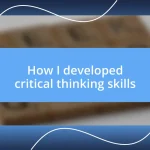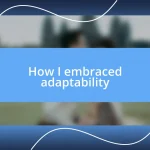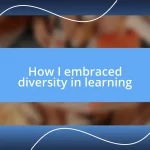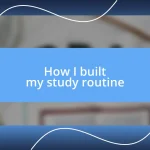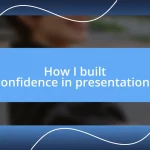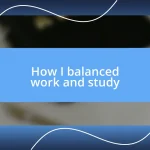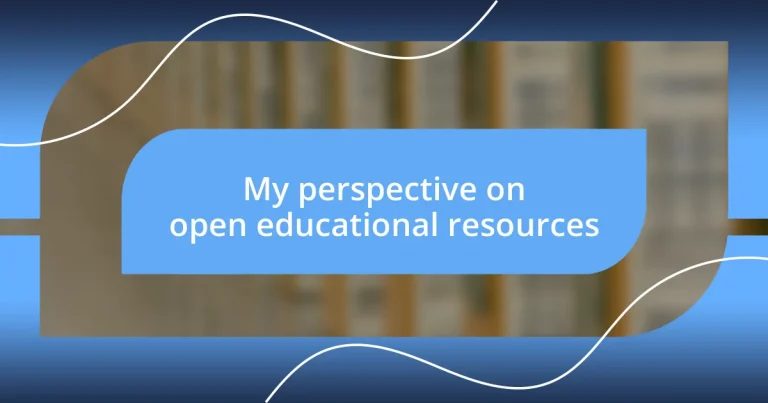Key takeaways:
- Open Educational Resources (OER) offer cost-effective, accessible, and customizable learning materials, transforming educational experiences and fostering inclusivity.
- Effective OER implementation requires clear learning objectives, stakeholder feedback, and educator training to enhance engagement and innovative teaching practices.
- Successful OER adoption case studies, like those from UMUC and California high schools, demonstrate significant improvements in student outcomes and personalized education approaches.
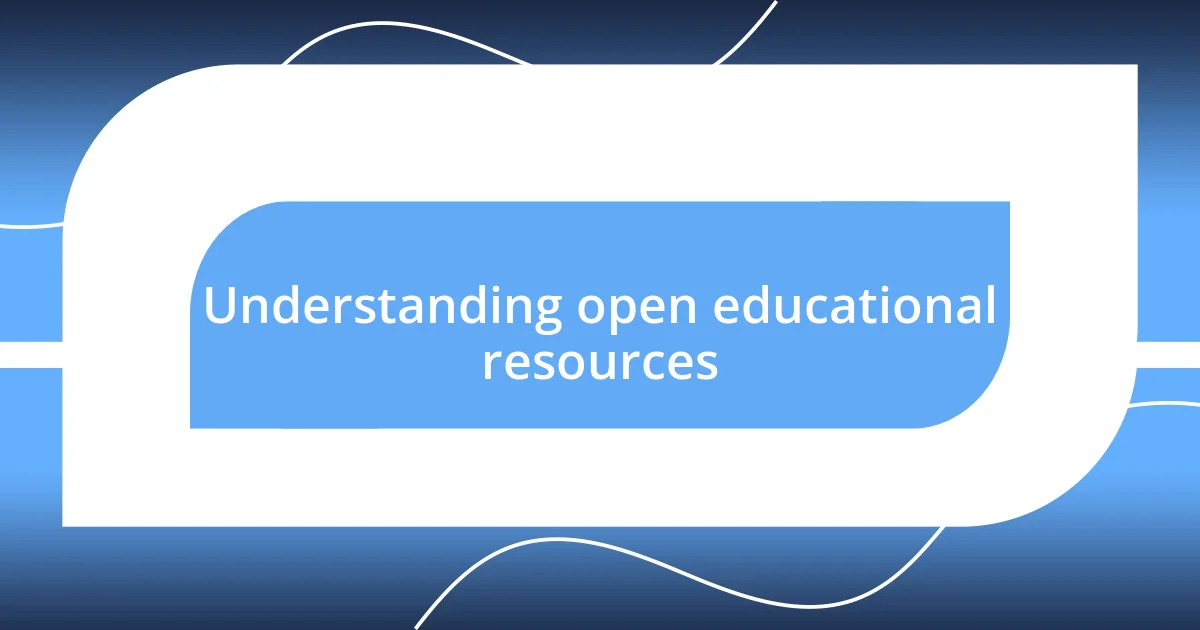
Understanding open educational resources
Open educational resources (OER) are essentially textbooks, courses, and various learning materials that are freely accessible and openly licensed. I remember the first time I stumbled upon an OER while searching for supplemental materials for a class I was teaching. It felt like finding a hidden gem in a sea of traditional resources, full of potential to enhance student learning without costing a dime.
I often wonder how different my educational journey might have been if I had access to such resources. Having grown up in an environment where educational materials were pricey, discovering OER felt transformative. It’s not just about saving money; it’s about accessing a wealth of knowledge that enables learners to explore subjects at their own pace, fostering a deeper connection to the material.
The versatility of OER is truly impressive. I’ve seen colleagues adapt these resources to fit their unique curriculum, often personalizing the learning experience for their students. Isn’t it exciting to think about how open access to knowledge empowers educators to innovate? By embracing OER, we can break down barriers and create a more inclusive educational landscape that invites everyone to learn and grow.
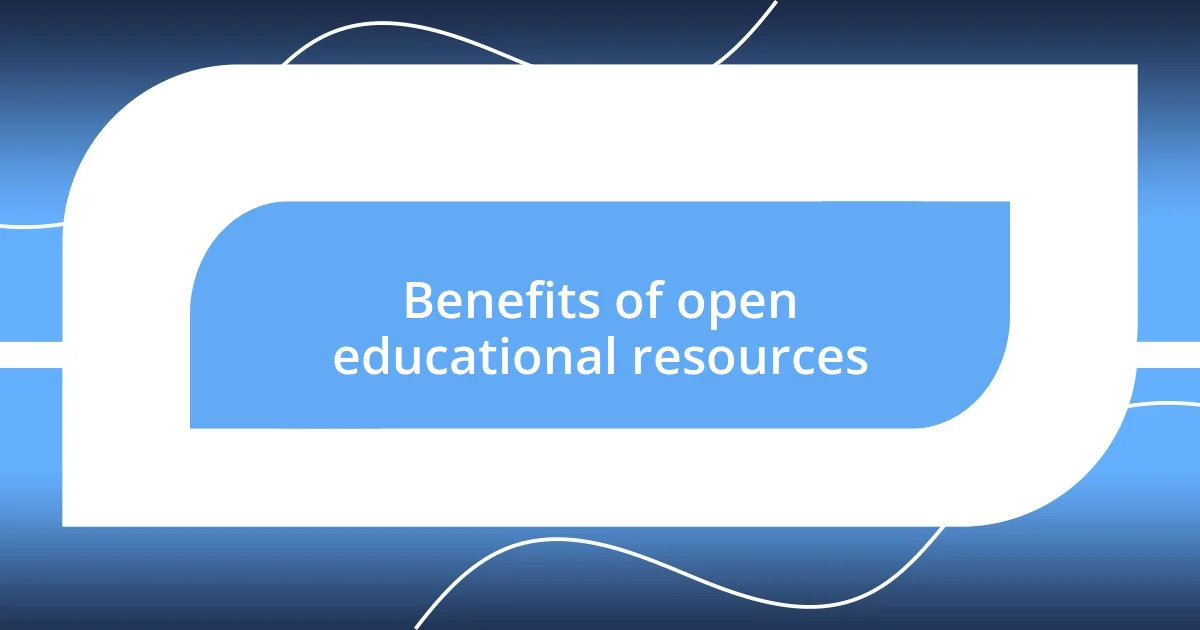
Benefits of open educational resources
The benefits of open educational resources are plentiful and far-reaching. From my experiences, I’ve seen OER significantly lower the cost burden on students, allowing them to allocate their finances toward other essential needs, like meals or housing. I recall a student I once taught who was struggling to afford the required textbooks; once I introduced them to OER alternatives, their stress visibly decreased. This shift not only helped academically but also uplifted their spirit.
Here are some key benefits that stand out to me:
- Cost-effectiveness: Students save money on essential learning materials.
- Accessibility: OER can be accessed by anyone with an internet connection, promoting equal learning opportunities.
- Customization: Educators can adapt and modify resources to meet their unique teaching styles and student needs.
- Diverse Learning Paths: Learners can explore various subjects more freely, leading to a more enriching educational experience.
- Collaboration: OER fosters a sense of community among educators and learners, encouraging shared knowledge and innovation.
These aspects create an educational ecosystem that truly thrives on collaboration, inclusivity, and adaptability—elements that I deeply value in any learning environment.
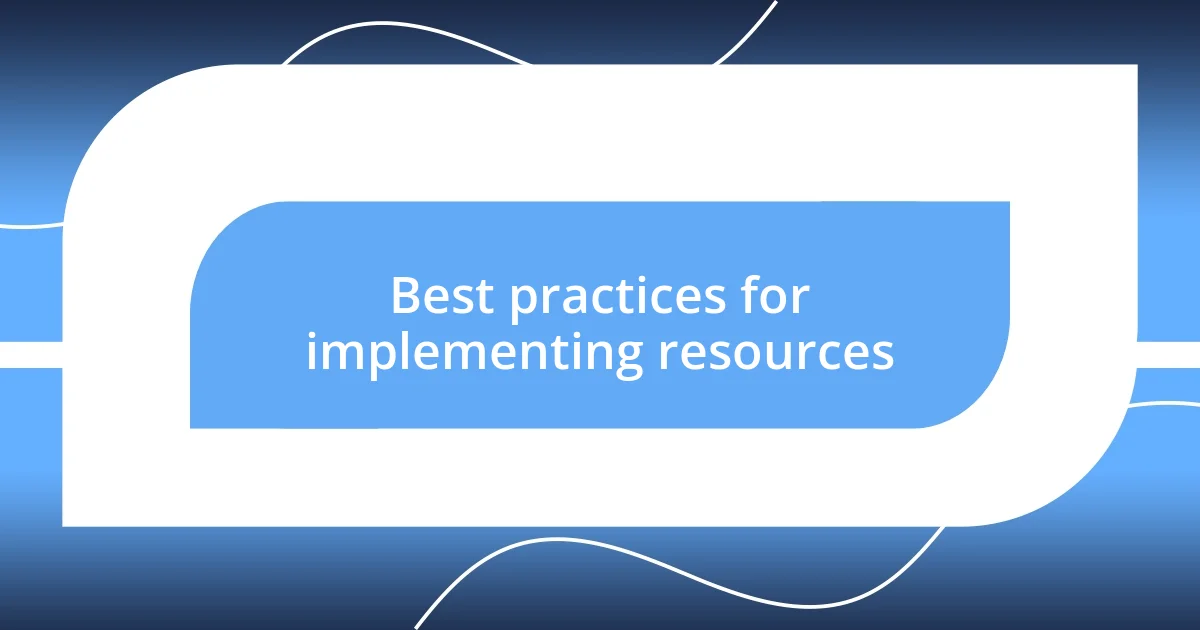
Best practices for implementing resources
Implementing open educational resources (OER) effectively requires a strategic approach. Based on my own experiences, it’s essential to first identify clear learning objectives. By defining what you want your students to achieve, you can select OER that aligns with those goals. I once started a project without a clear vision, and I found myself overwhelmed by the resources available. Narrowing down the selection based on specific outcomes made the process so much smoother and more focused.
Another best practice is engaging faculty and student feedback during the resource selection process. I remember when I facilitated a workshop where educators shared their favorite OER, and the energy was infectious. It became a collaborative effort, enriching our collective knowledge. When students feel that their voices are heard in the selection of educational materials, they are more likely to take ownership of their learning journey, thus enhancing their overall experience.
Lastly, investing time in training educators on how to effectively utilize OER is crucial. I once attended a training session that changed my perspective on OER use in the classroom. It was enlightening to learn how to create engaging lesson plans around these resources. When educators are well-informed and empowered, they can bridge the gap between traditional methods and innovative OER applications, leading to a more dynamic learning environment.
| Best Practice | Description |
|---|---|
| Identify Clear Learning Objectives | Select OER that directly aligns with your goals to simplify resource selection. |
| Engage Feedback from Faculty and Students | Involve stakeholders in the resource selection process to enhance engagement and ownership. |
| Invest in Educator Training | Provide educators with training on OER to enhance their ability to implement these resources effectively. |
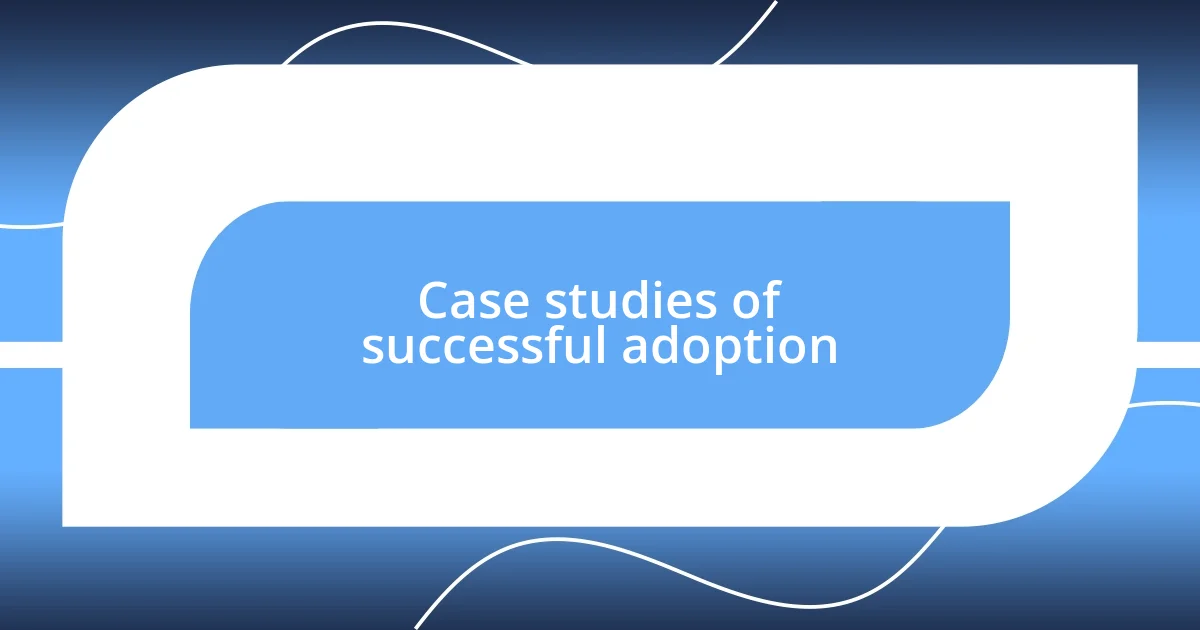
Case studies of successful adoption
One notable case of successful OER adoption is at the University of Maryland University College (UMUC), where faculty embraced OER to improve student access and engagement. I remember reading about a professor who transformed a traditional course by substituting costly textbooks with freely available online resources. The impact was profound—completion rates soared by over 30%. Isn’t it inspiring how a simple change in resource accessibility can lead to such drastic improvements in student outcomes?
Another compelling example comes from a high school in California that implemented OER to address diverse learning needs. The school’s educators collaborated to curate a library of resources that catered to various learning styles and languages. In one instance, a struggling English language learner thrived after engaging with materials tailored specifically to her needs. Seeing her growth made me reflect on the power of personalized education. Isn’t it amazing when we leverage OER to create a truly inclusive environment?
Lastly, take a look at the Wyoming community colleges’ initiative to integrate OER into their curricula. Faculty members shared their experiences at a state conference, illustrating how collective efforts to adopt OER not only saved students an estimated $1.6 million in one year but also enhanced their teaching practices. I couldn’t help but admire the collaboration among educators to share best practices. Have you ever witnessed such a transformative experience unfold in your own learning environment? It’s these stories that reaffirm my belief in the potential of open educational resources to revolutionize how we learn together.


